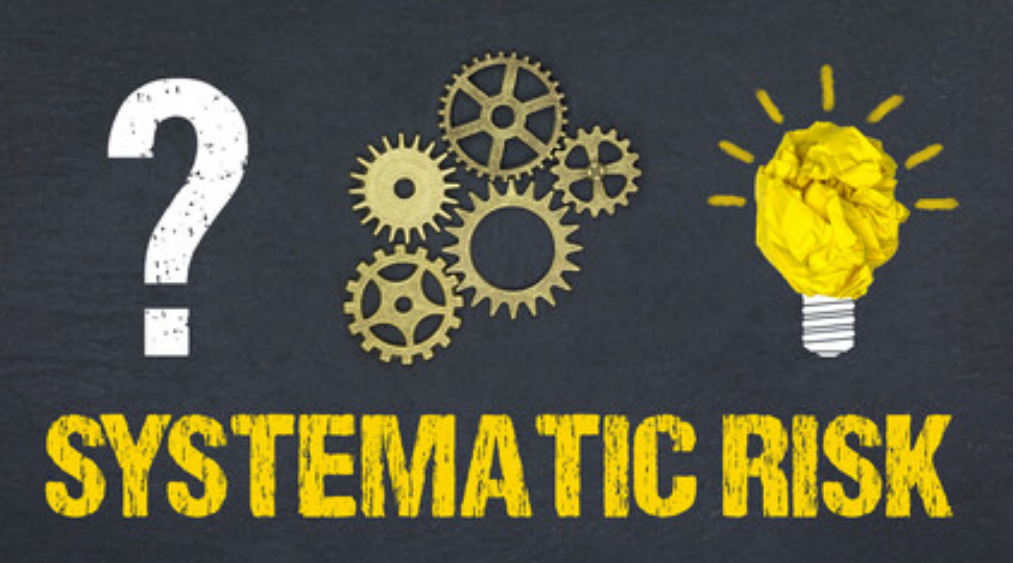
One of the most crucial concepts for investors to grasp is that risk is intrinsic in the investment process. The most prevalent, also referred to as systematic risk, can be induced by a variety of reasons. Economic, sociopolitical, and market-related events are examples. Systematic risk is also known as market risk. Diversification offers little to lessen market risk since it is all-encompassing. But, with the correct investing methods, it may be managed and possibly minimized. Here's everything you need to know about systematic risk as an investor.
Recession, economic weakness, geopolitical war, increasing or stagnant interest rates, currency volatility, or volatile commodity prices are the most common causes of systematic risk. These are also systematic risk examples. As previously stated, diversification within publicly traded stocks or fixed-income products does nothing to mitigate this form of risk because it impacts the entire financial market.
Unsystematic risk impacts individual enterprises or industries instead of the entire economy. The present push toward electrification of transportation, for example, has the potential to harm the petroleum business.
Oil firms are hiking prices dramatically as a safeguard against this risk. Yet, this is an unsustainable option because the effect of this strategy has the potential to accelerate the transition to electric vehicles. Unsystematic risk also includes changes in industry-specific regulations, the sudden development of a powerful competitor, product recalls, illicit activities, labor concerns, or a company's nationalization.
Owners of securities in firms harmed in this way will face undesirable changes in the future. Diversification, unlike systematic risk, can act as a buffer against unsystematic risk. Investors should simply be cautious to ensure that their portfolios include assets capable of dampening any drop in the afflicted equities until they may exit them.
Real estate, private equity, venture capital, digital assets, and collectibles are "alternative investments." They are less associated with public equity. Hence have the capacity for diversification.
These investments can act as a buffer against systematic risk. For instance, inflation can increase the value of alternative assets like real estate.
Yet, real estate assets were previously only available to the super duper-rich. Thus, leaving average investors with no access.
But, Assetmonk was formed with the intention of significantly improving access to alternative assets by offering them to a broader range of investors.
Knowing systematic risk can help you make better investment decisions. It can also assist to put things into perspective in terms of how they may affect your portfolio's results in the short and long run. Finally, irrespective of how you choose to handle your finances, your risk tolerance will have a significant influence. This is critical to understand before and during your investment journey.
Assetmonk is one of the best investment companies that offer a wide range of alternative investing or alternative investment opportunities in real estate. Real estate investment options that were previously unavailable to ordinary investors are now widely available. Real estate syndication, also known as syndicated real estate, allows retail investors to have access to these elusive asset classes for less money. Real estate investors also can access greater liquidity in real estate investing and do passive real estate investing through fractional ownership.
1. Investing in Peer-to-Peer Lending: Risks and Rewards.
2. To Become An Accredited Investor, Here’s What You Need To Know.
Q1.What is systematic risk with an example?
A. Recession, economic weakness, geopolitical war, increasing or stagnant interest rates, currency volatility, or volatile commodity prices are examples of systemic risk.
Q2. What is systematic and unsystematic risk?
A. Unsystematic risk is a risk exclusive to a firm or sector. Systematic risk is a risk related to the overall market. Systematic risk is the risk of an investment portfolio that is not reliant on individual investments and is ascribed to broad market forces.
Q3. What are the 4 kinds of systematic risk?
A. Exchange rate risk, inflation risk, interest rate risk, and market risk are the four major categories of systematic risk.
Q4. Can systematic risk be changed?
A. Systematic risk is both unforeseeable and difficult to completely prevent. It can only be reduced by hedging or using the appropriate asset allocation strategy, not through diversification.
Q5. How can we measure systematic risk?
A. Beta (β) indicates the sensitivity of an individual asset or portfolio of securities to market risk. So, beta is the most often used measure of systematic risk.
